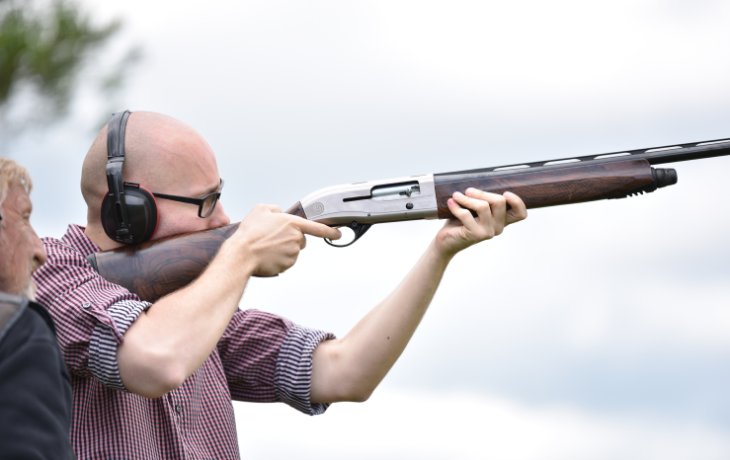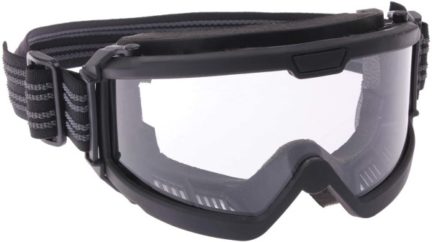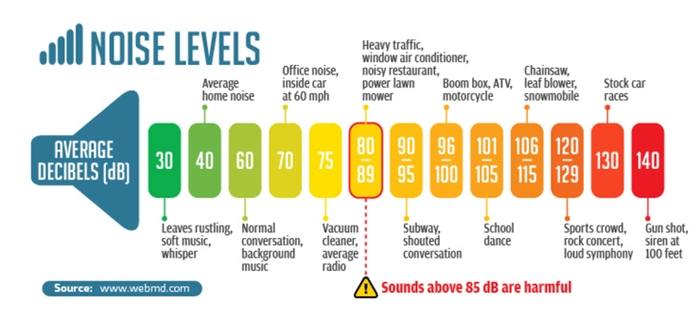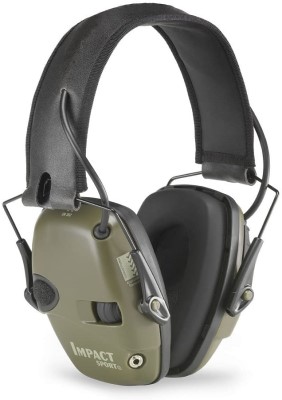Eye protection is straightforward and takes one of two forms: something that looks like normal glasses or a winter-sports-style goggle. Most people are fine with the glasses-style, but goggles come in handy for preppers because they do double duty in situations with smoke, tear gas, etc.
If you already wear prescription glasses and know they are made of an impact-resistant material such as polycarbonate, you can just use those, or you can put goggles over top.
The lenses can be tinted like sunglasses or come in clear, yellow, amber, or grey. Grey lenses help reduce glare while preserving the ability to read colors in bright conditions. Amber and yellow work great at dawn and dusk.
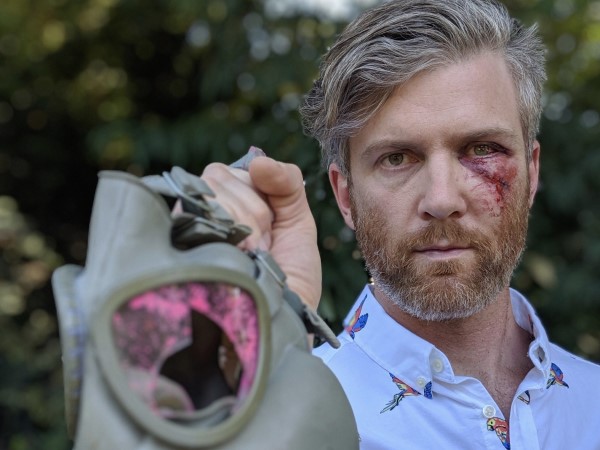
Eye pro is technically supposed to be replaced after three years of regular use. But if you take care of them (eg. don’t store them in the sun), they’ll usually last much longer.
Note that glasses can induce a parallax error when shooting a scoped rifle — which means that your reticle might be in a different place if you are wearing glasses or vice versa. A simple way to mitigate this is to zero the rifle with your eye protection on and see if your zero changes with and without the glasses.
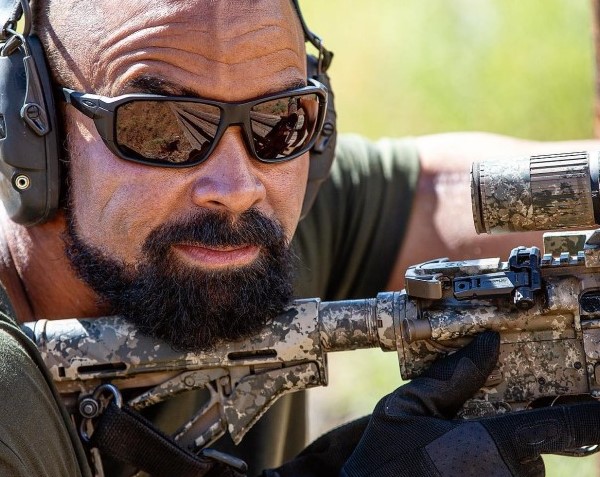
Best glasses-style eye protection:
- Howard Leight Uvex Hypershock Shooting Glasses (Amazon)
- Oakley Standard Issue (Amazon)
- Pilla
- Revision Military Sawfly (Amazon)
- Smith Optics Elite Aegis Arc (Amazon)
- Walker’s Sport Glasses (Amazon)
- Wiley X Saber Advanced (Amazon)
Best goggle-style eye protection:
- Oakley Standard Issue Ballistic HALO (Amazon)
- Revision Military Goggle System (Amazon)
- Rothco OTG Ballistic Goggles (Amazon)
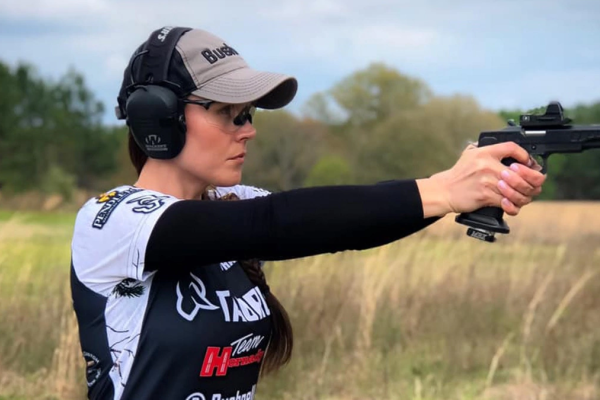
Permanent hearing damage can occur when your ears are exposed to at least 140 decibels. Rifles can create 160-170 decibels — for reference, a rocket launch is 180 decibels — and even the ultra-quiet .22 Long Rifle ammunition can go above 140. Unless you have a very specific build (eg. a subsonic .300 BLK with suppressor), every shot you take will damage your ears without protection.
Ear pro has more variety than eye pro:
- Disposable in-ear soft foam inserts, like the kind they hand out on airplanes.
- Reusable in-ear inserts. Some are soft and some are molded to your ear, like the “boil in water then bite down to customize” sports mouthguards.
- Basic (“passive”) over-ear muffs.
- Electronic (“active”) over-ear muffs.
It’s not uncommon for people to use both an in-ear and over-ear at the same time for doubled-up protection. This is particularly helpful with very loud firearms in enclosed spaces — eg. a big-bore rifle with muzzle break at an indoor shooting range.
Ear protection falls under ANSI’s S3.19 standard. To meet this standard, companies publish a Noise Reduction Rating (NRR), which is how many decibels of sound is reduced by the hearing protection. When shopping for ear protection look for an NRR of at least 22.
If you have or plan on using a suppressor (often incorrectly referred to as a “silencer”), know that an average suppressor will lower the sound by around 15-25 decibels.

Best disposable earplugs:
- Mack’s Maximum Protection Soft Foam Earplugs (100 count) (Amazon)
- Radians 25 Paid Disposable Foam Earplugs (50 count) (Amazon)
- Walker’s Foam Ear Plug Jar (100 count) (Amazon)
How to properly install earplugs:
https://www.youtube.com/watch?v=Ax_NT4Wim2Y
Best reusable earplugs:
- 3M Peltor Sporting Good Banded Hearing Protector (Amazon)
- Decibullz Custom Molded Earplugs (Amazon)
- Etymotic GunsportPRO Electronic Hearing Protection (Amazon)
- Titan Tactical Reusable Ear Plugs with heavy duty case (Amazon)
- SureFire EP4 Sonic Defenders (Amazon)
- Walker’s Corded Foam Plugs (Amazon)
Some units, like the SureFire Sonic Defenders, feature a small hole that works like electronic hearing protection in that it allows sounds below 80 decibels in while blocking anything louder. Electronic earplugs do exist, like the Etymotic Gunsport Pro, but they can be pricey.
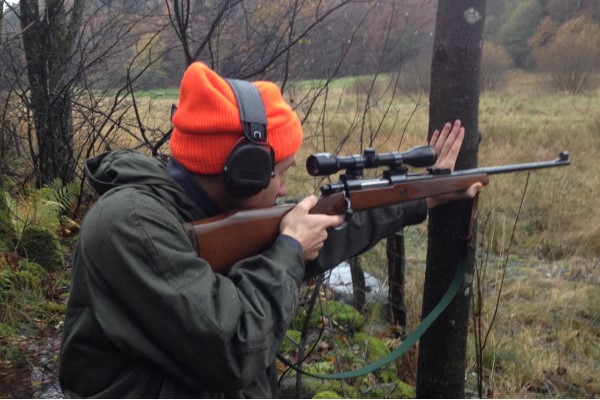
Best basic over-ear:
- 3M Peltor X5A (Amazon)
- Caldwell Adjustable Earmuffs (Amazon)
- Champion Traps and Targets Slim Earmuffs (Amazon)
- Howard Leight Leightning Ultraslim Shooting Earmuff (Amazon)
- Walker’s Razor Slim Earmuff (Amazon)
Best electronic over-ear:
- 3M Peltor Tactical 6-S Slim Line Electronic Hearing Protection (Amazon)
- Champion Pro Elite Vanquish Electronic Hearing Muffs (Amazon)
- Howard Leight Impact Sport (Amazon)
- MSA Sordin Supreme Pro-X (Amazon)
- Walker’s Game Ear Razor Slim (Amazon)
Most serious shooters end up with active earpro at some point because they make a huge difference during a day at the range or out on a hunt. You set how sensitive the earmuffs are, which determines how loud a sound has to get before the earmuffs “shut off” the sounds from outside.
In practice, this means you can comfortably talk and hear what’s around you except for the split second when there’s a loud bang.
Electronic earmuff-style hearing protection can cost between $50 to $300. Why the extreme price range? The more expensive options on this list are made to interface with communications equipment used by law enforcement and military personnel. The majority of the population will be fine with a $50 set of Howard Leight or Walker’s Game Ear Razors.
The electronics run on batteries, but in the event they fail, you still have basic hearing protection. Remove the batteries when not in use, and they will last a lifetime.
More: Best disposable batteries and rechargeable batteries for preppers
